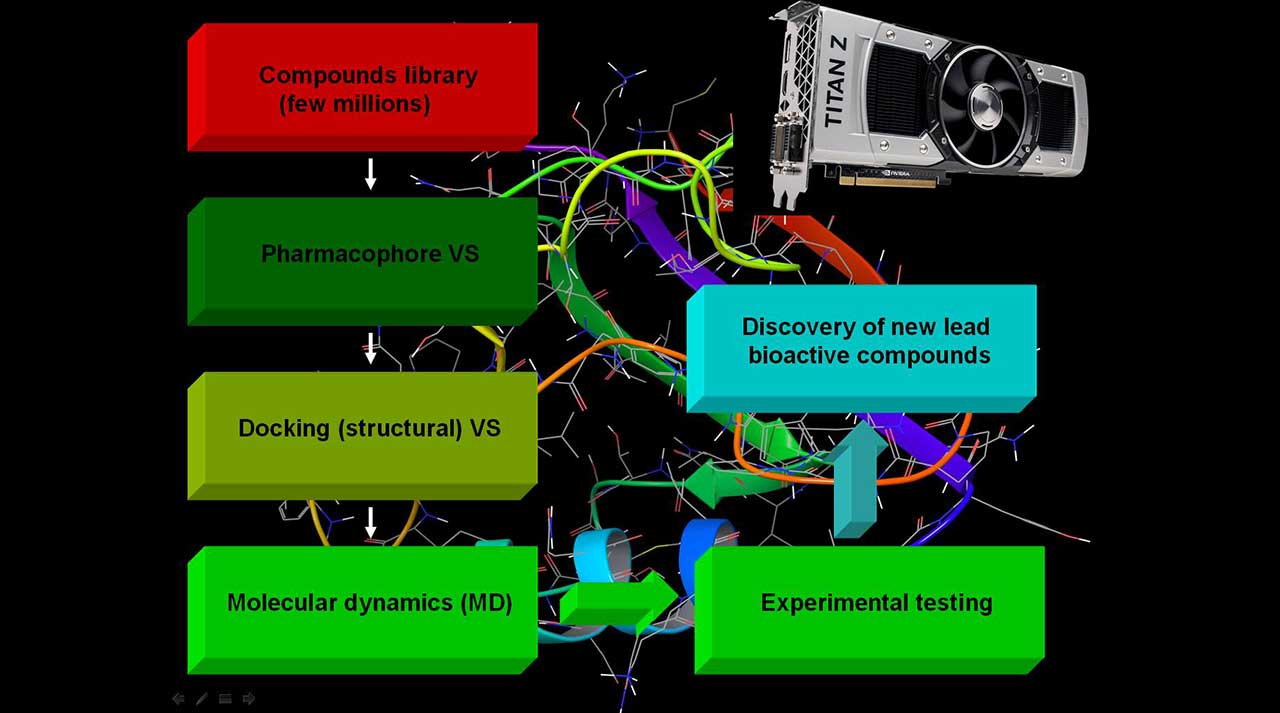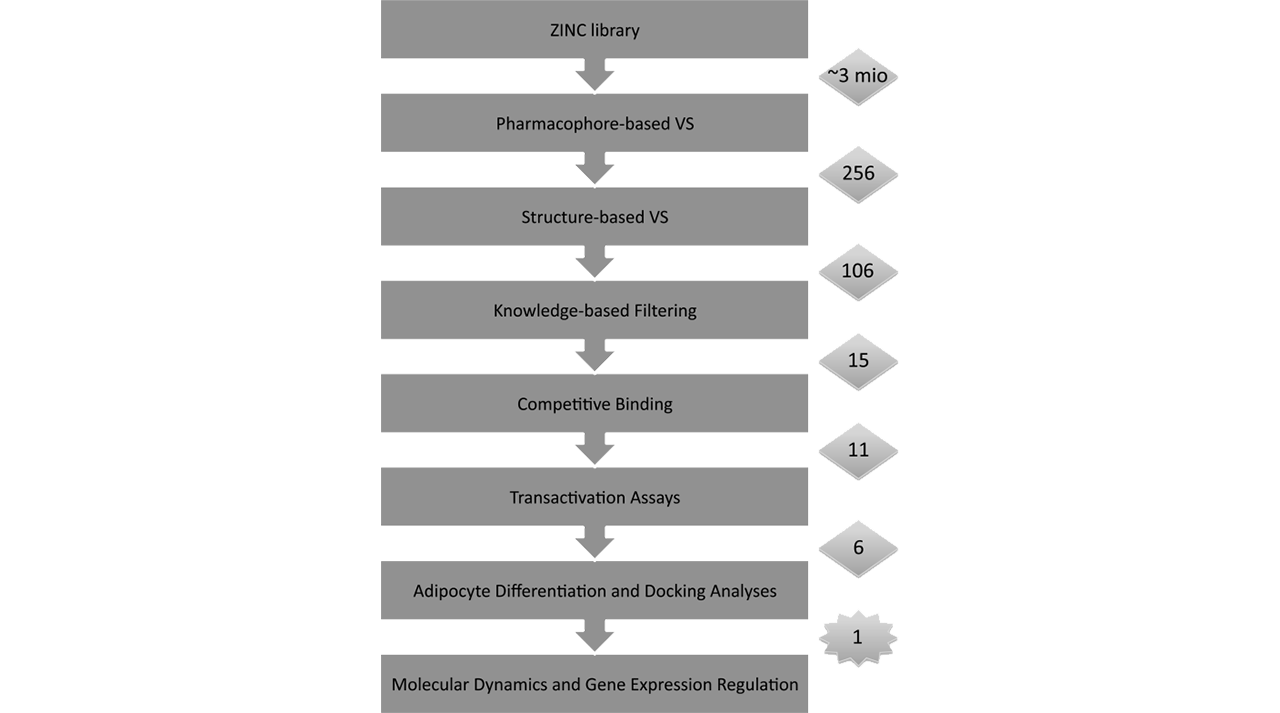Structure based in silico drug design helps to greatly reduce both the time and cost of your project without any compromise of the accuracy.
One of the main challenges facing modern drug design is to find new biologically active lead compounds, i.e. those which can bind to a target protein, and to reduce the price for such a project. For instance, if one tries to screen a library of 200 000 compounds, one will have to spend about 20 million US dollars only for these chemicals and much more for the other necessary reagents. Even screening of an inefficiently small collection of 2000 compounds will cost about 200K dollars for the chemicals. Further, the lead optimization process is the most expensive part of any drug discovery project as an individual step. It costs more than 400 millions dollars and the prediction of ligands activity, selectivity and water solubility is in of great help reducing dramatically both the time and cost of the project. More medicinal chemists relay on these predictions now which mainly based on the free energy (FEP) calculations. It has been shown in many real life drug discovery projects that the activity of the lead compound can be easy optimized in only 2 round calculations from micro to low nanomol activity. Many examples in regard to the optimization of ligand selectivity and water solubility are available now.


Thus, structure based in silico drug design helps to greatly reduce both the time and cost of your project. It comprises a vast number of advanced scientific computational techniques and resources. Therefore, structure based in silico drug design is not only a powerful tool for discovering novel potential drugs, but it can also lead to a huge cut in the required funding for this goal. Correspondingly, it is widely employed nowadays in big pharmaceutical companies. Many corporations suggest structure based in silico methodologies either for screening new lead compounds or for an examination of the potential toxicity of already known chemicals.
However, most of their services are limited to one or few approaches, such as, for example, QSAR methods, which results in inefficient detection of the compounds activity, small possible structural diversity, and many other scientific problems.
We, at Micar Innovation (Micar21), provide a modern scheme for the screening of millions of compounds and the discovery of new leads, based on the combination of the most advanced approaches nowadays, which ensures the success of your project!
... see scientific information
